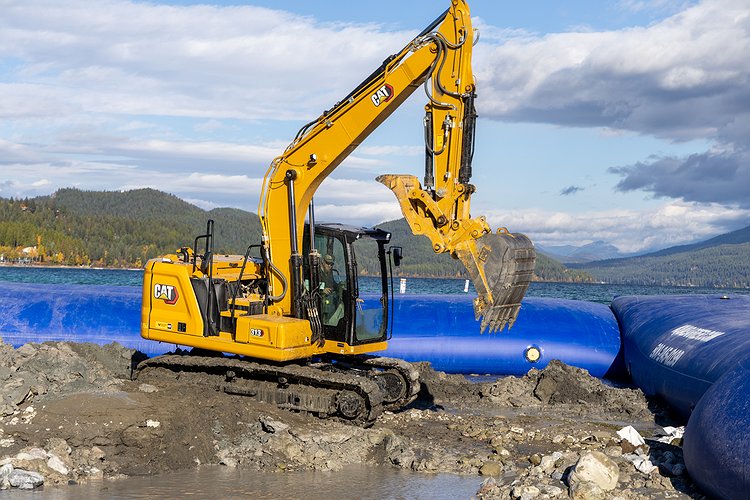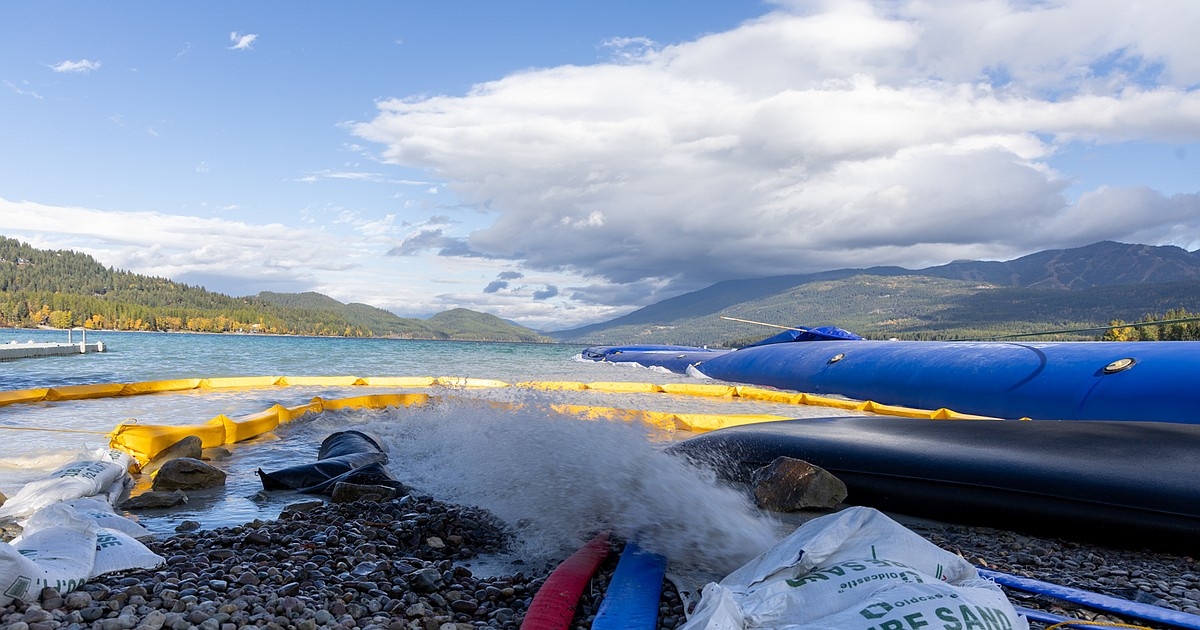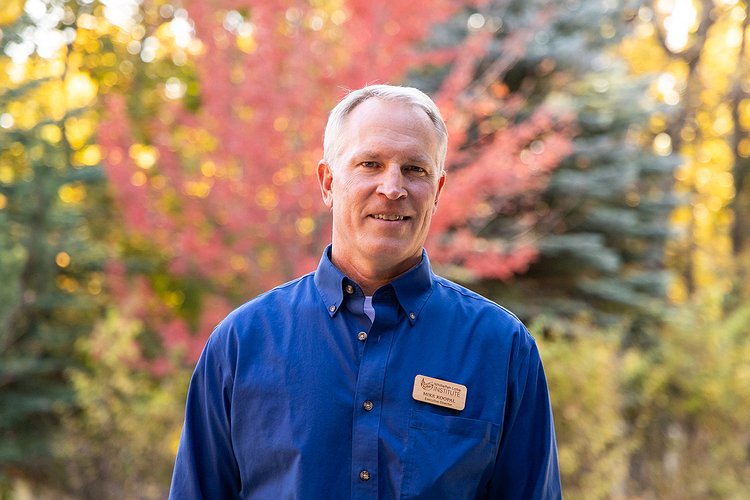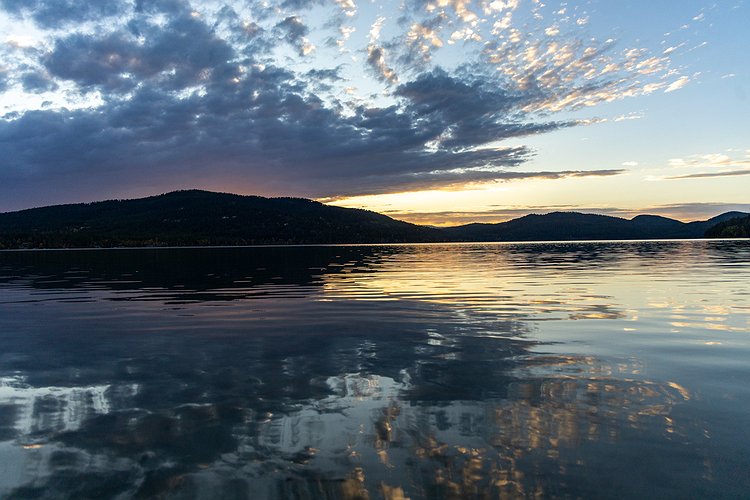Description
Whitefish Lake — a location for both recreation and drinking water — faces the challenge of balancing fun with public health.
Twenty years ago, Whitefish Lake Institute founder Mike Koopal began testing the relationship between boating activity and concentrations of BTEX chemicals — benzene, toluene, ethylbenzene and xylene — in the lake. BTEX compounds, found in boat fuel, are carcinogenic and can be absorbed through skin contact or ingestion.
At the Whitefish Lake Institute’s Science Quencher presentation on Friday, limnologist Cassie Roberts shared the team’s findings after two decades of research. The event, held at The Lodge at Whitefish Lake, marked the Institute’s 20th anniversary and featured a “State of the Lake” discussion highlighting water quality challenges and successes.
The BTEX study began in 2005, measuring concentrations at four lake sites: a mid-lake site, City Beach, The Lodge at Whitefish Lake and Whitefish Lake State Park. The U.S. Environmental Protection Agency regulates BTEX in drinking water, but not in recreational waters. Long-term sampling focused on the mid-lake site.
Researchers sampled BTEX levels while counting boats on the lake with binoculars. They found BTEX concentrations correlated with boat numbers at three sites, but not at City Beach — suggesting spills at the boat launch. The team presented their findings to the Whitefish City Council, and a grate trench was installed in 2015 at the City Beach launch. The grate trench diverts fuel into a containment chamber, preventing runoff into the lake.
Testing the levels in 2025, researchers found some levels of BTEX in areas surrounding the lake, yet the levels were much lower. Roberts attributed this to a change in boat models. In the early 2000s, two-stroke engines — which released more BTEX — were more common.
“At the mid-lake reference site, we found no BTEX for two summers in a row,” Roberts said. “We even went back a second year just to confirm our data on busy boating days.”
Ongoing developments are being made to boat launches on the lake.
On Oct. 3, the city began construction on a new project to extend the boat launch at City Beach. Due to the large size of modern boats, many are bottoming out and disrupting sediment. The new ramp aims to address this issue for the benefit of both water quality and boat safety.
On Saturday morning, JD Thinning, one of the construction workers, was pounding away at the project. He said the work was expected to be done in a few days.
“We got 10 days. We’re going to muddy the water for a few days, but it’ll help erosion in the long term,” Thinning said.
The team used aqua barriers to gain access to the lake’s floor, utilizing irrigators to disperse the sediment.
Sediment is extremely sensitive because of its density in phosphorus. The element is split into two categories when discussing lakes. Soluble reactive phosphorus is readily available to plants. Particulate phosphorus is often trapped in sediment.
When boats disrupt the water and shoreline, particulate phosphorus spreads into the water. Alge feeds off high phosphorus and nitrogen environments, leading to algal blooms that negatively impact the water’s potability.
Boats bottoming out could also be related to lower lake levels. Koopal said the lake’s elevation has dropped roughly 3 feet since 1980 — a change most visible later in the season when runoff diminishes. While 3 feet might sound like a small number, those feet are spanning a massive area. Whitefish Lake covers more than 5 square miles.
“Things are changing,” Koopal said at the Science Quencher event. “With climate change, we’re finding that time and magnitude of the stream runoff is sooner in the year, so it doesn’t allow for that water budget for base flow conditions.”
As the climate shifts, more shoreline will be exposed to boat wakes, allowing nitrogen- and phosphorus-rich soil to wash into the water system.
Strengthening shoreline protections is difficult because Whitefish Lake is split between jurisdictions — part within city limits and 66% in Flathead County — creating differing regulations.
The Whitefish Lake established the Lakeshore Protection Committee in 1975 to review and comment on proposed activities within the jurisdiction.
“The mayor [John Muhlfeld] and I went down and pitched an idea for an interlocal agreement with the county, and we got laughed out of the room,” Koopal said.
To mitigate wake damage, officials have installed buoys to keep wake boats farther from shore.
Koopal emphasized that the lake’s ability to purify itself depends on precipitation.
“What we need is more water to help fill the lake and flush things out,” he said.
Studies show a direct correlation between rainfall and water purity in high elevation lakes. Decreases in sulfur and nitrogen are associated with precipitation over time and lead to improved lake chemistry.
However, increased stormwater runoff brings new pollutants. Water from highways and lawns carries contaminants into nearby waterways.
One solution might be more flowers.
Cassie Lewis, executive director of the Western Montana Conservation Coalition, said rain gardens offer a natural filtration solution. The Flathead Rain Garden Initiative promotes planting native vegetation that absorbs runoff before it reaches lakes and streams.
“A rain garden is a shallow depression filled with plants,” Lewis told the Science Quencher audience. “Water funnels into the depression and soaks into the root systems instead of being discharged into waterways.”
This type of preventative care would prevent storm water from making its way into the lake, allowing it to flush naturally — all while keeping the conditions safe for people to recreate and drink from.
Samuel Armstrong-Dubois is a University of Montana journalism student. The Whitefish Pilot is hosting two students this fall through the university's Report for Montana work-based learning course.
 Crews work on the boat ramp at City Beach on Whitefish Lake on Saturday, Oct. 11, 2025. (Brooke Bickers/For the Pilot)
Crews work on the boat ramp at City Beach on Whitefish Lake on Saturday, Oct. 11, 2025. (Brooke Bickers/For the Pilot)
 Crews work on the boat ramp at City Beach on Whitefish Lake on Saturday, Oct. 11, 2025. (Brooke Bickers/For the Pilot)
Crews work on the boat ramp at City Beach on Whitefish Lake on Saturday, Oct. 11, 2025. (Brooke Bickers/For the Pilot)
News Source : https://whitefishpilot.com/news/2025/oct/15/state-of-the-lake-recreation-and-water-quality-a-balancing-act/
Other Related News
10/16/2025
The public is invited to tour a new 90-bed pre-release center in Evergreen at a pair of u...
10/16/2025
The Kalispell Planning Commission on Tuesday voted to recommend to City Council annexatio...
10/16/2025
BILLINGS Mont AP A federal judge on Wednesday dismissed a lawsuit from young climate act...
10/16/2025














